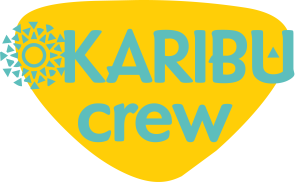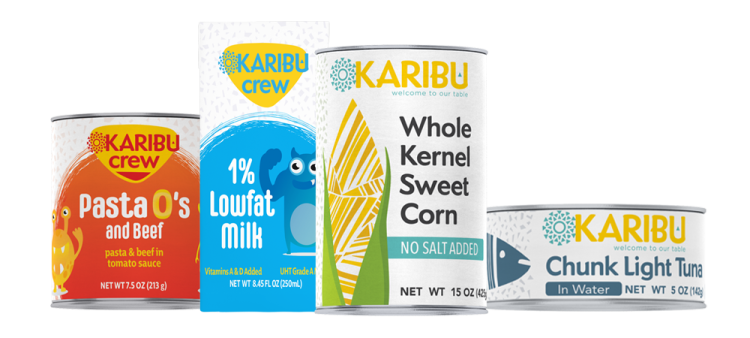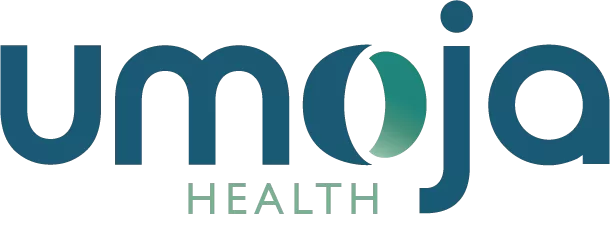
United in the fight for access to quality food for all
At Umoja, our Nutrition Security Solutions team brings quality everyday foods, goods, meal kits, and tailored solutions to food banks, non-profits, and community-based organizations across the country. Hunger relief organizations face unique challenges and ever-increasing needs. Our team of dedicated former food bankers and logistics experts are here to help stretch your food dollar and make the most of the resources you have to feed your community.
Our suite of solutions includes a wide variety of products from everyday staples to culturally connected foods, distribution-ready boxes, backpacks and USDA program solutions, and nutrition-focused food-is-medicine programs. Our global sourcing capabilities and scalable solutions make us the perfect fit from smaller non-profits and regional pantries to expansive state-wide and national feeding initiatives.
At Umoja, we utilize logistics expertise, our virtual vendor ecosystem, smart procurement, purchasing power, creativity and a mission-driven approach to deliver customized experiences, empower community networks and help to serve those most in need.
Global sourcing capabilities
Our sourcing team can find any item, anywhere, ensuring you always have the products you need. With Umoja’s diversified supply chain solutions and network of manufacturing partners, we can bridge gaps on high-demand products including canned vegetables, milk, peanut butter, and more, as well as more unique items that are challenging to source. Enjoy the advantage of our buying capacity and logistics expertise for the best possible price.
- Canned / Pouched entrees and ready-to-heat meals
- Pastas and pasta sauces
- Canned vegetables
- Canned fruits
- Canned proteins and fish
- Fresh produce
- Fresh proteins
- Snacks
- Dried goods including rice, cereals and legumes
- Beverages and milk
- Shelf stable yogurt
- Baking items
- Pancake and Biscuit mixes
- Condiments
- Plant-based Protein products (meatless)
- Culturally familiar shelf stable foods and produce
- Household goods (non-food)
- Hygiene products
- Paper goods
Looking for something you don’t see here? Ask our team and we can find it for you!

Our Brands
Introducing Umoja’s own Karibu brand and the Karibu Crew.



Karibu is Swahili for welcome!
Our Karibu brand presents carefully selected and crafted everyday products that deliver quality, value and care. Enjoy a wide variety of quality foods you can trust to make mealtime simple and delicious from vegetables to fruits, seafood, entrees, grains and more. We promise you will always feel at home with Karibu. WELCOME to our table.
Read More
Understanding Food Insecurity in America Today
Food insecurity affects 38 million Americans, including 12 million children. But the challenge goes beyond simple hunger—it’s about consistent access to nutritionally adequate food that supports health and wellbeing. Food banks and community organizations see this reality daily: families choosing between utilities and groceries, seniors skipping meals to afford medications, children arriving at school hungry because weekends offer fewer meal opportunities.
Rural food insecurity presents unique complications. Geographic isolation, limited transportation options, and fewer grocery stores create food deserts where fresh, affordable options simply don’t exist. Our nutrition security advisors work extensively in these communities, developing distribution strategies that overcome geographic barriers while respecting local needs and preferences.
The Economics of Hunger Relief Operations
Food procurement represents the largest expense for most hunger relief organizations. Rising food costs, supply chain disruptions, and increased demand create pressure on already tight budgets. Smart purchasing strategies can dramatically improve cost efficiency—bulk buying, forward purchasing during price dips, and leveraging collective purchasing power through partnerships.
Storage and distribution costs add complexity beyond food procurement. Refrigerated storage, transportation logistics, and volunteer coordination require careful planning. Our shelf-stable meal solutions address several of these challenges simultaneously, reducing storage requirements while maintaining nutritional quality.
Grant funding often comes with specific requirements that impact operational flexibility. USDA commodities, state emergency food assistance, and private foundation grants each carry distinct guidelines. Understanding these requirements helps organizations maximize available resources while maintaining compliance.
Addressing Nutritional Quality in Emergency Food Systems
Emergency food distribution traditionally focused on quantity over quality. However, research increasingly shows that food insecurity correlates with higher rates of diabetes, hypertension, and other diet-related chronic conditions. This shift in understanding drives demand for more nutritious options in food bank inventories.
Shelf-stable nutrition presents ongoing challenges. Canned vegetables often contain high sodium levels. Processed foods may offer convenience but lack fresh produce’s nutritional benefits. Our product development focuses on bridging this gap—creating shelf-stable options that deliver improved nutritional profiles without sacrificing convenience or cost-effectiveness.
Cultural Competency in Food Programming
Effective nutrition programs recognize that food is deeply cultural. Standard food bank inventories may not reflect the dietary preferences or cooking practices of diverse communities. Latino families might prefer rice and beans over pasta. Asian communities often need access to specific vegetables and seasonings. These aren’t luxuries—they’re essential for dignity and program effectiveness.
Language barriers can limit program access. Nutrition education materials, program applications, and volunteer interactions need multilingual support in many communities. Our culturally connected food options come with educational materials designed for diverse populations.
Religious dietary restrictions require careful consideration. Kosher, halal, and other dietary laws influence food choices for millions of Americans. Programs that accommodate these needs see higher participation rates and stronger community engagement.
Child Nutrition Beyond the School Day
School breakfast and lunch programs serve approximately 30 million children daily during the academic year. But what happens during summers, weekends, and school holidays? The summer nutrition gap represents one of the most significant challenges in child food security.
Traditional summer feeding sites require children to travel to specific locations during set hours. This model works well in some communities but fails others. Transportation challenges, work schedules, and safety concerns limit participation. New program models, including home delivery and mobile feeding, address these barriers.
Backpack Programs and Weekend Food Support
Weekend food insecurity affects school-age children whose families struggle to provide adequate meals when school programs aren’t available. Backpack programs send food home with children on Fridays, bridging the weekend gap. These programs require careful planning—foods must be child-friendly, require minimal preparation, and remain fresh without refrigeration.
School partnerships are essential for effective backpack programs. Teachers and school staff often identify children who would benefit most. However, programs must maintain confidentiality to avoid stigmatizing participants. Discrete distribution methods and universal offerings help address this concern.
Parent engagement can enhance program effectiveness. Families appreciate programs that respect their dignity while providing support. Clear communication about program goals, food safety information, and preparation suggestions help families maximize program benefits.
Senior Nutrition and Aging in Place
Senior food insecurity often goes unrecognized. Fixed incomes, transportation limitations, and health challenges create barriers to adequate nutrition. Medicare doesn’t cover food costs, leaving many seniors choosing between medications and meals.
Older Americans Act (OAA) nutrition programs provide some support, but funding limitations restrict capacity. Home-delivered meals serve the most vulnerable seniors, but waiting lists are common. Congregate meal programs offer social interaction alongside nutrition but require transportation and mobility.
Health Conditions and Dietary Needs
Chronic conditions common among seniors—diabetes, heart disease, kidney disease—often require dietary modifications. Standard meal programs may not address these specific needs. Medically-tailored nutrition programs represent an emerging solution, providing foods designed for specific health conditions.
Medication interactions with foods complicate senior nutrition planning. Blood thinners require consistent vitamin K intake. Diabetes medications depend on regular meal timing. These medical considerations influence program design and food selection.
Social isolation compounds senior nutrition challenges. Many seniors eat alone regularly, which can lead to decreased appetite and poor nutrition. Programs that combine food access with social interaction address multiple aspects of senior wellbeing.
Technology Solutions for Modern Food Distribution
Digital platforms are transforming food access. Online ordering systems, mobile applications, and digital payment options create new possibilities for reaching underserved populations. However, technology adoption varies significantly among different communities and age groups.
Inventory management systems help organizations track food safety, manage expiration dates, and optimize distribution efficiency. Real-time data enables better decision-making about purchasing, storage, and distribution priorities.
Data Integration and Privacy Considerations
Multiple organizations often serve the same communities, but data sharing limitations can create inefficiencies. Families might receive services from food banks, WIC programs, SNAP, and local nonprofits simultaneously. Better coordination could improve outcomes while reducing administrative burden.
Privacy regulations, particularly around health information, require careful attention in program design. Food-as-medicine programs that integrate with healthcare providers must comply with HIPAA requirements while maintaining program effectiveness.
Geographic information systems (GIS) help organizations understand service gaps and optimize program placement. Mapping food access, transportation routes, and demographic data reveals opportunities for strategic program expansion.
Quality nutrition security requires comprehensive approaches that address immediate needs while building long-term solutions. Through strategic partnerships, innovative distribution models, and community-centered programming, we can create systems that ensure everyone has access to the nutrition they need for health and dignity.




